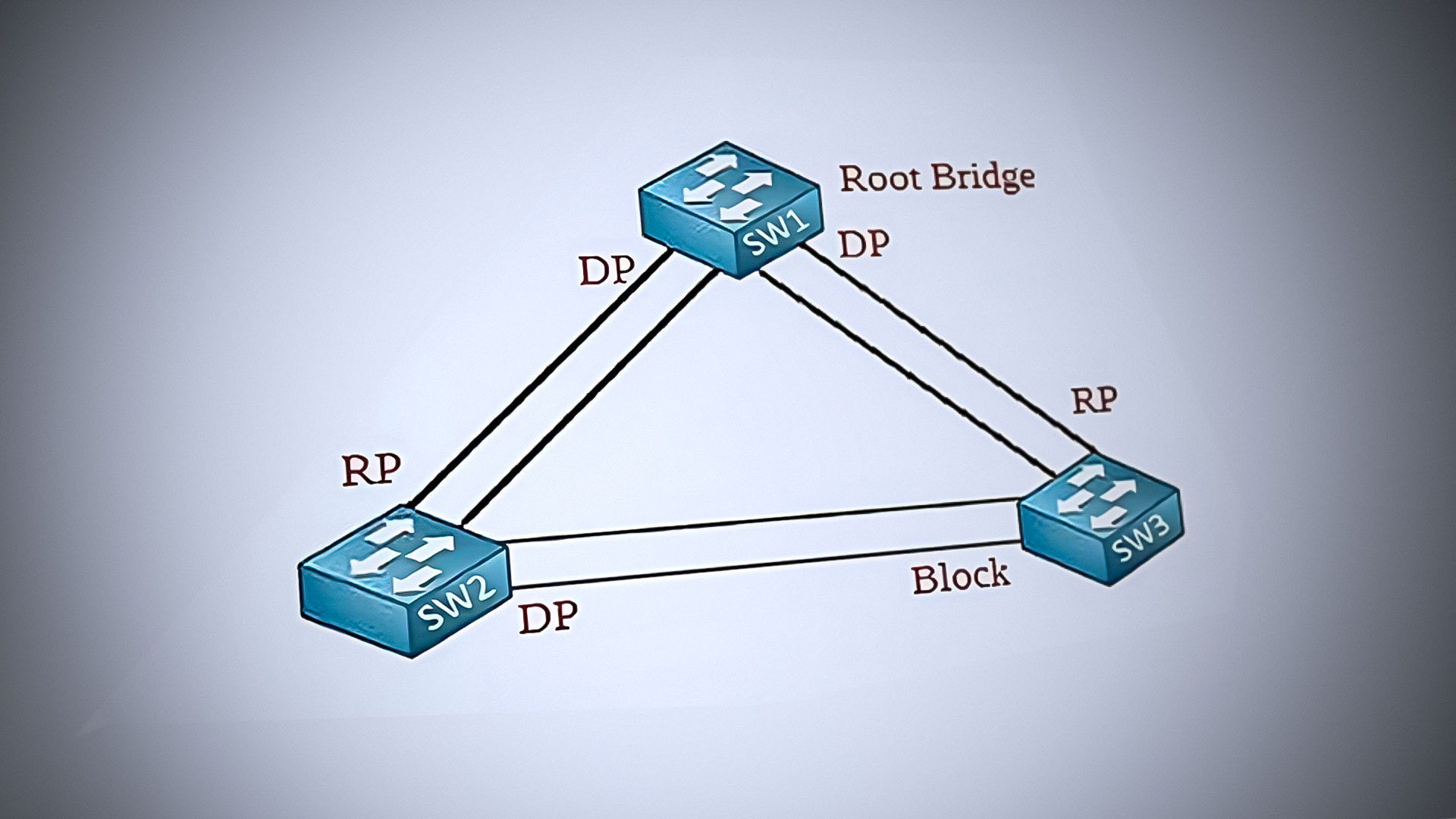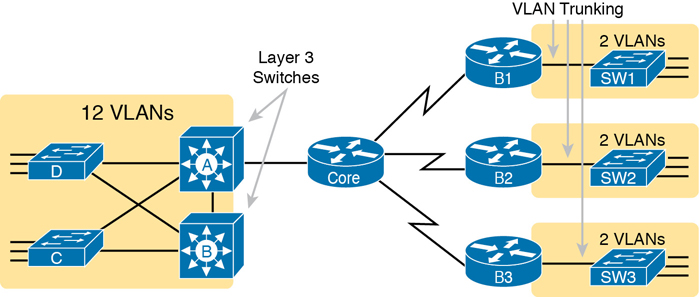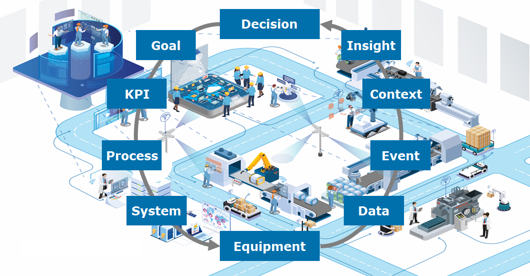TRUSTED BY THE SMARTEST TEAMS IN THE WORLD FOR CERTIFIED CANDIDATES
SPOTO Blogs
Useful learning materials to become certified IT personnel
-
- 1083
- SPOTO
- 2024-06-20 10:35
-
- 390
- SPOTO
- 2024-06-19 17:34
-
- 415
- SPOTO
- 2024-06-19 17:29
-
- 1050
- SPOTO
- 2024-06-19 17:21
-
- 960
- SPOTO
- 2024-06-19 16:13
-
- 711
- SPOTO
- 2024-06-17 16:01
-
- 1489
- SPOTO
- 2024-06-14 17:34
-
- 686
- SPOTO
- 2024-06-14 17:26
-
- 487
- SPOTO
- 2024-06-14 17:16
TRUSTED BY THE SMARTEST TEAMS IN THE WORLD FOR CERTIFIED CANDIDATES
SPOTO Blogs
Useful learning materials to become certified IT personnel
-
- 1083
- SPOTO
- 2024-06-20 10:35
Table of ContentsI. CCNA Certification OverviewII. DevNet Associate Certification OverviewIII. Differences Between CCNA & DevNet Associate CertificationsIV. CCNA or DevNet Associate: Which Certification is Better?Conclusion In the modern digital landscape, technical certifications have become a crucial measure of professional expertise. Cisco's CCNA (Cisco Certified Network Associate) and DevNet certifications are considered among the most prestigious in the field of networking technology. The CCNA certification serves as the traditional entry point for a career in networking, covering the fundamentals and key skills of the field. On the other hand, DevNet certifications represent a new trend in network automation and programming. For those new to the industry, deciding which certification to pursue as the first step in their career can be a challenging decision. In this article, we'll explore the significance of CCNA and DevNet certifications, and analyze which one might be the better fit for beginners. I. CCNA Certification Overview The CCNA (Cisco Certified Network Associate) certification is a globally recognized entry-level networking certification offered by Cisco Systems. It is designed to equip network professionals with the knowledge and skills needed to design, deploy, manage, and maintain small to medium-sized enterprise networks. The CCNA certification has become a landmark qualification in the field of networking technology due to its comprehensive and practical nature.CCNA Success Starts Here: Get SPOTO's 200-301 Exam Dumps and Ace the CCNA Certification! 1.1 CCNA Study Areas The primary objective of the CCNA certification is to provide a solid foundation in networking fundamentals for professionals. It covers the following major learning areas: Networking Fundamentals: Including the OSI model, data encapsulation, Ethernet technology, and TCP/IP protocols. Routing Technology: Covering static and dynamic routing protocols such as RIP, OSPF, and EIGRP. Switching Technology: Exploring switch operating principles, VLAN configuration, and STP protocols. Wireless Local Area Networks: Covering WLAN standards, security measures, and more. Network Security Fundamentals: Covering basic security concepts and access control lists (ACLs). 1.2 CCNA Certification Exam Topics The CCNA certification exam (200-301) is a comprehensive assessment that covers a range of topics to ensure candidates have an in-depth understanding of networking technology. The exam typically includes, but is not limited to, the following areas: Network Models and Protocols: In-depth understanding of the OSI model, the TCP/IP model, and related network protocols. Routing and Switching: Learning how routers and switches work and how to configure them to support network communications. Infrastructure Services: Implementing and optimizing network services such as DHCP, DNS, and NAT. Infrastructure Security: Understanding the basic principles of network security, including firewall, VPN, and ACL configuration. Infrastructure Management: Mastering the skills of managing and monitoring network devices. Comprehensive Application: Applying the knowledge gained to real-world scenarios, such as configuring an enterprise network and solving network problems. Ace Your Exam with SPOTO's Free Practice Tests! II. DevNet Associate Certification Overview The DevNet Associate certification is a professional certification from Cisco Systems that focuses on network automation, programming, and software development. As the entry-level certification in the DevNet system, it is designed to prepare IT professionals to use application programming interfaces (APIs), software development tools, and automation technologies in modern network environments.DevNet Associate Success Starts Here: Get SPOTO's 200-901 Exam Dumps and Ace the DevNet Associate Certification! 2.1 DevNet Associate Study Areas The primary purpose of the DevNet Associate certification is to equip IT professionals with the skills and knowledge needed to bridge the gap between network engineering and software development. It covers the following major learning areas: Network Automation: Learning how to use automation tools and scripts to streamline network tasks. Programming Fundamentals: Acquiring basic knowledge of at least one programming language (usually Python) to interact with network devices. API Interaction: Learning how to communicate with network devices using RESTful APIs and other network APIs. Software Development Life Cycle: Understanding the basic principles and processes of software development. Network Simulation and Sandbox Experiments: Performing network simulations and experiments using Cisco-provided tools. 2.2 DevNet Associate Exam Topics The DevNet Associate certification exam (200-901 DEVASC) is a comprehensive assessment that evaluates a candidate's knowledge and skills in network automation and programming. The exam typically includes, but is not limited to, the following topics: Network Programmability: Understanding how network devices are controlled and monitored through programming interfaces. Using APIs: Mastering the discovery, calling, and use of network APIs to automate network tasks. Scripting: Demonstrating the ability to write simple scripts to automate common network configuration and management tasks. Version Control: Understanding how to use a version control system, such as Git, to manage code. Containerization and Virtualization: Comprehending the use of containerization technologies, like Docker, in network automation. DevOps Culture and Tools: Familiarizing with Continuous Integration/Continuous Deployment (CI/CD) processes and related tools. Ace Your Exam with SPOTO's Free Practice Tests! III. Differences Between CCNA & DevNet Associate Certifications The CCNA (Cisco Certified Network Associate) and the DevNet Associate certifications each have their own distinct features, benefits, and target areas of specialization and skill requirements. Here's a comparative overview of the two: CCNA Certification: Focuses on networking fundamentals and the operation of Cisco devices. Ideal for professionals looking to develop a solid foundation in networking. Covers the basics of routing and switching, network security, wireless LANs, and more. Considered an entry-level certification in the networking industry with high industry recognition. DevNet Associate Certification: Focuses on network automation, programming, and software development. Ideal for professionals interested in network programming, API usage, and process automation. Emphasizes network management and innovation using modern tools and techniques. Relatively new, but growing in importance with the increasing focus on web technology. In summary, the CCNA certification is geared towards traditional networking fundamentals and operations, while the DevNet Associate certification is oriented towards network automation, programming, and software development. The choice between the two depends on the individual's career aspirations and the specific skills they wish to develop - whether it's a focus on core networking or a blend of networking and programming/automation. IV. CCNA or DevNet Associate: Which Certification is Better? Both the CCNA and DevNet certifications have their own unique advantages and cater to different career scenarios. 4.1 CCNA Certification The CCNA certification is an ideal starting point for those wishing to pursue a career in traditional network engineering. The CCNA provides a comprehensive education in the fundamentals of networking, including routing and switching, network security, wireless LANs, and network services. It emphasizes the hands-on operation and configuration of network equipment, ensuring that certification holders can design, deploy, and maintain network infrastructures. The main advantage of the CCNA certification is its wide industry recognition and in-depth understanding of basic networking concepts. The CCNA is an invaluable credential for professionals seeking roles as network administrators, network engineers, or within the field of network infrastructure. 4.2 DevNet Certification The DevNet certification represents an emerging trend in networking technology - network automation and software development. The DevNet certification focuses on teaching professionals how to use APIs, programming languages, and automation tools to improve the efficiency and effectiveness of network operations. It is suitable for those interested in network programming, automation, and DevOps practices. The strength of the DevNet certification lies in its close alignment with current technology trends. As organizations increasingly rely on automation and software-defined networking (SDN), DevNet certification holders will have a competitive advantage in automating network functions, integrating cloud services, and implementing continuous integration/continuous deployment (CI/CD). 4.3 How to Choose? When deciding between the CCNA and DevNet certifications, the primary consideration should be your career goals. If your goal is to become an expert in network infrastructure, the CCNA certification will provide you with a solid foundation. If your aim is to progress in network automation and software development, or to pursue a career in DevOps, the DevNet certification will be more aligned with your needs. Personal interest is also an important factor. If you are passionate about programming and automation, the DevNet certification will provide you with a platform to explore these areas. Conversely, if you prefer to focus on the practical application of network hardware and infrastructure, the CCNA certification may be a better fit. Conclusion After an in-depth examination of the CCNA and DevNet Associate certifications, we can clearly see the distinct focuses and advantages of each in the field of networking technology. The CCNA certification is underpinned by its deep knowledge of network infrastructure and traditional network engineering. It provides a comprehensive education in the fundamentals of networking, including routing, switching, security, and network services. This certification is an invaluable credential for professionals seeking roles as network administrators, network engineers, or within the field of network infrastructure. On the other hand, the DevNet Associate certification features a modern approach to network automation, programming, and software development. It focuses on teaching professionals how to use APIs, programming languages, and automation tools to improve the efficiency and effectiveness of network operations. This certification is well-suited for those interested in network programming, automation, and DevOps practices, as it aligns with the industry's increasing reliance on automation and software-defined networking (SDN). The choice between the CCNA and DevNet Associate certifications should be based on an individual's career goals, interests, and industry needs. If your focus is on traditional network administration and maintenance, the CCNA certification may be the more appropriate option. Conversely, if your job involves programming, automation, and software development, the DevNet Associate certification will provide you with the necessary skills and knowledge. Regardless of the certification you choose, continuous learning and adapting to technological changes are key. Networking technology is an ever-evolving field, and having the right certifications can open up new career opportunities for you and help you stay competitive in the constantly changing technological landscape. -
- 390
- SPOTO
- 2024-06-19 17:34
Table of ContentsWhat is EIGRP?EIGRP TerminologyEIGRP Metric CalculationConfiguring EIGRPEIGRP Packet TypesEIGRP Neighbor RelationshipsEIGRP Route RedistributionEIGRP SummarizationEIGRP for IPv6EIGRP Security Enhanced Interior Gateway Routing Protocol (EIGRP) is a sophisticated distance-vector routing protocol designed by Cisco. It is widely used in enterprise networks for its advanced features and efficiency. Chapter 6 of the "CCIE Routing and Switching v5.0 Official Cert Guide, Volume 1" provides an in-depth exploration of EIGRP. This blog post aims to introduce key technical terms and fundamental concepts of EIGRP, helping readers understand its functionalities and benefits in network routing. What is EIGRP? EIGRP is an advanced distance-vector routing protocol that incorporates features from both distance-vector and link-state protocols. It is designed to optimize routing efficiency and convergence speed, making it suitable for large and complex networks. Key Features of EIGRP: Rapid Convergence: Utilizes the Diffusing Update Algorithm (DUAL) to quickly converge and calculate loop-free paths. Scalability: Supports large network topologies with multiple routers. Flexibility: Compatible with both IPv4 and IPv6. Efficient Use of Bandwidth: Minimizes bandwidth usage by sending partial updates only when there are changes in the network. EIGRP Terminology Understanding the specific terminology associated with EIGRP is crucial for grasping its operational mechanics: DUAL (Diffusing Update Algorithm): The algorithm used by EIGRP to ensure loop-free and efficient path computation. Successor: The primary route to a destination, which is stored in the routing table. Feasible Successor: A backup route that meets the feasibility condition and can be used if the primary route fails. Feasible Distance (FD): The lowest calculated metric to reach a destination. Advertised Distance (AD): The distance reported by a neighboring router to reach a particular destination. Topology Table: Stores all the routes learned from EIGRP neighbors, including successors and feasible successors. EIGRP Metric Calculation EIGRP uses a composite metric based on several parameters to determine the best path to a destination. The metric is calculated using the following components: Bandwidth: The minimum bandwidth of the path. Delay: The cumulative delay of the path. Reliability: The likelihood of link failure. Load: The current traffic load on the path. MTU (Maximum Transmission Unit): The smallest MTU along the path. The EIGRP metric formula combines these components to produce a single value that represents the cost of the route. Configuring EIGRP Configuring EIGRP on Cisco devices involves several steps, including enabling EIGRP on the router, specifying the autonomous system number, and defining the networks to be advertised. Basic Configuration Commands: Enable EIGRP: router eigrp 1 Specify Networks: network 192.168.1.0 Configure EIGRP Metric Weights (Optional): metric weights 0 1 0 1 0 0 EIGRP Packet Types EIGRP uses several types of packets for communication and route management: Hello Packets: Used to discover and maintain neighbor relationships. Update Packets: Contain route information and are sent when there are changes in the network. Query Packets: Sent to ask neighbors for routes when a route goes down. Reply Packets: Sent in response to query packets, providing route information. Acknowledgment Packets: Used to acknowledge the receipt of update, query, and reply packets. EIGRP Neighbor Relationships EIGRP establishes neighbor relationships with directly connected routers running EIGRP. These relationships are maintained through the exchange of hello packets. Neighbor relationships are critical for the exchange of routing information and the overall stability of the EIGRP network. Establishing Neighbors: Hello Packet Exchange: Routers send hello packets to discover potential neighbors. Neighbor Table Update: Upon receiving a hello packet, routers add the sender to their neighbor table. Continuous Monitoring: Hello packets are periodically exchanged to maintain the relationship. EIGRP Route Redistribution Route redistribution in EIGRP allows routes from other routing protocols or different EIGRP autonomous systems to be imported and advertised. This capability is essential for networks using multiple routing protocols or for merging separate network segments. Redistribution Configuration: Basic Redistribution: router eigrp 1 redistribute ospf 1 metric 10000 100 255 1 1500 Setting Metrics: When redistributing routes, appropriate metrics should be configured to ensure optimal path selection. EIGRP Summarization EIGRP supports automatic and manual route summarization, which helps reduce the size of routing tables and improves network efficiency. Automatic Summarization: By default, EIGRP performs automatic summarization at classful network boundaries. Manual Summarization: Configured on a per-interface basis to create specific summary routes. Manual Summarization Configuration: interface GigabitEthernet0/0 ip summary-address eigrp 1 192.168.0.0 255.255.252.0 EIGRP for IPv6 EIGRP is compatible with IPv6, and the configuration is similar to IPv4, with some specific commands for IPv6 addressing and operation. Key IPv6 Configuration Commands: Enable IPv6 EIGRP: ipv6 router eigrp 1 Specify IPv6 Networks: interface GigabitEthernet0/0 ipv6 eigrp 1 EIGRP Security EIGRP includes several features to enhance the security of routing information and neighbor relationships: Authentication: EIGRP supports MD5 authentication to verify the integrity of routing updates. Authentication Configuration: key chain EIGRP-KEY key 1 key-string MYSECRETKEY ! interface GigabitEthernet0/0 ip authentication mode eigrp 1 md5 ip authentication key-chain eigrp 1 EIGRP-KEY EIGRP is a powerful and versatile routing protocol that combines the best features of distance-vector and link-state protocols. Understanding the key concepts and terminologies, such as DUAL, successors, feasible successors, and the metric calculation, is essential for network engineers. Configuring EIGRP involves enabling the protocol, specifying networks, and managing neighbor relationships. Advanced features like route redistribution, summarization, and IPv6 support make EIGRP suitable for complex and large-scale networks. Mastery of EIGRP ensures efficient, reliable, and secure routing in Cisco networks, contributing to robust and scalable network infrastructures. -
- 415
- SPOTO
- 2024-06-19 17:29
Table of ContentsWhat is IP Routing?Static vs. Dynamic RoutingCommon Routing ProtocolsRoute RedistributionRoute SummarizationIPv6 Routing IP routing is the process of moving packets across a network from a source to a destination. It involves various protocols and techniques to ensure efficient and reliable data transmission. Chapter 5 of the "CCIE Routing and Switching v5.0 Official Cert Guide, Volume 1" offers a comprehensive exploration of IP routing. This blog post will introduce key technical terms and fundamental concepts of IP routing, enabling readers to understand how data navigates through complex network infrastructures. What is IP Routing? IP routing is the mechanism by which data packets are forwarded from one network segment to another. It involves routers and routing protocols that determine the best path for data to travel across an interconnected network. Routers maintain routing tables that store the routes to different network destinations. Key Components of IP Routing: Routing Table: A database in a router that stores route information, including destination networks and the next hop to reach them. Routing Protocols: Algorithms and processes that routers use to communicate route information and select optimal paths. Next Hop: The immediate next device to which a packet should be forwarded on its way to the final destination. Static vs. Dynamic Routing Routing can be classified into static and dynamic routing based on how routes are determined and maintained. Static Routing: Definition: Static routing involves manually configuring routes in a router's routing table. Use Cases: Typically used in smaller networks or specific network segments where routes do not change frequently. Advantages: Simple and predictable. Disadvantages: Lack of scalability and flexibility, as manual updates are required for changes. Dynamic Routing: Definition: Dynamic routing uses routing protocols to automatically discover and maintain routes. Use Cases: Suitable for larger, complex networks with frequent topology changes. Advantages: Scalability, flexibility, and adaptability. Disadvantages: Requires more resources and introduces complexity. Common Routing Protocols Routing protocols are essential for dynamic routing, enabling routers to exchange information and determine the best paths for data packets. Here are some key routing protocols: RIP (Routing Information Protocol): Type: Distance-vector routing protocol. Metric: Hop count. Characteristics: Simple to configure, suitable for small networks, limited to 15 hops, updates every 30 seconds. OSPF (Open Shortest Path First): Type: Link-state routing protocol. Metric: Cost, based on bandwidth. Characteristics: Scalable, fast convergence, hierarchical design with areas, supports VLSM and CIDR. EIGRP (Enhanced Interior Gateway Routing Protocol): Type: Advanced distance-vector protocol. Metric: Composite metric (bandwidth, delay, load, reliability). Characteristics: Rapid convergence, supports unequal-cost load balancing, uses DUAL algorithm. BGP (Border Gateway Protocol): Type: Path-vector protocol. Metric: Path attributes (AS path, next hop, etc.). Characteristics: Used for routing between autonomous systems (inter-domain routing), highly scalable, supports policy-based routing. Route Redistribution Route redistribution involves sharing route information between different routing protocols within the same network. This process is crucial in networks that use multiple routing protocols, enabling seamless communication across different network segments. Key Concepts: Administrative Distance: A value that routers use to rate the trustworthiness of routes received from different routing protocols. Lower values are preferred. Redistribution Process: Configured on a router to import and export routes between different routing protocols. Routing Metrics and Path Selection Routing metrics are values used by routing protocols to determine the best path for data packets. Different protocols use different metrics, such as hop count, bandwidth, delay, load, and reliability. Path selection is based on these metrics to optimize network performance. Common Metrics: Hop Count: The number of routers a packet must pass through. Bandwidth: The data capacity of a link. Delay: The time taken for a packet to traverse a path. Load: The amount of traffic on a link. Reliability: The likelihood of a link failure. Route Summarization Route summarization, or route aggregation, is the process of combining multiple network routes into a single, summarized route. This technique reduces the size of routing tables, conserves bandwidth, and improves network efficiency. Benefits: Reduces Routing Table Size: Aggregates multiple routes, decreasing the amount of routing information that needs to be processed and stored. Enhances Performance: Simplifies routing decisions, reducing the processing load on routers. Improves Stability: Minimizes the impact of network changes on routing tables. Example: If a router has routes to 192.168.1.0/24, 192.168.2.0/24, and 192.168.3.0/24, it can summarize them as 192.168.0.0/22. IPv6 Routing IPv6 routing introduces new considerations due to the differences between IPv4 and IPv6 addressing. Routing protocols have been updated or developed to support IPv6. Key Points: IPv6 Addressing: Uses 128-bit addresses, vastly increasing the address space compared to IPv4. Updated Protocols: OSPFv3, EIGRP for IPv6, and MP-BGP support IPv6 routing. Dual Stack: Networks can run IPv4 and IPv6 simultaneously, requiring routers to handle both types of addresses and protocols. Routing Security Securing the routing infrastructure is critical to protect against threats such as route hijacking, spoofing, and denial of service attacks. Several techniques and protocols are used to enhance routing security. Key Security Measures: Route Authentication: Ensures that routing updates come from trusted sources. Examples include MD5 authentication for OSPF and BGP. Route Filtering: Controls which routes are accepted or advertised, preventing the propagation of invalid or malicious routes. Access Control Lists (ACLs): Restrict access to routing protocol communications based on IP addresses and other criteria. IP routing is a fundamental aspect of network design and operation, ensuring that data packets are efficiently and reliably delivered across interconnected networks. Understanding the principles of static and dynamic routing, routing protocols, route redistribution, metrics, summarization, IPv6 routing, and routing security is essential for network engineers and administrators. Mastery of these concepts enables the design and maintenance of robust, scalable, and secure networks, capable of supporting diverse and evolving communication needs. -
- 1050
- SPOTO
- 2024-06-19 17:21
Table of ContentsWhat is Link Aggregation?Link Aggregation Control Protocol (LACP)Configuring Link Aggregation on Cisco DevicesPort Aggregation Protocol (PAgP)Troubleshooting Link AggregationAdvanced Link Aggregation Features Link aggregation is a crucial concept in modern networking, allowing for the bundling of multiple physical links to form a single logical link. This approach enhances bandwidth, redundancy, and reliability. Chapter 4 of the "CCIE Routing and Switching v5.0 Official Cert Guide, Volume 1" provides in-depth insights into link aggregation and its implementation in Cisco networks. This blog post will explore the key technical terms and concepts associated with link aggregation, enabling readers to grasp the fundamentals and advanced features of this technology. What is Link Aggregation? Link aggregation, also known as Ethernet bonding or NIC teaming, is the process of combining multiple network connections in parallel to increase throughput and provide redundancy. This technology is standardized by the IEEE under the 802.3ad specification, also known as Link Aggregation Control Protocol (LACP). Key Benefits of Link Aggregation: Increased Bandwidth: By aggregating multiple links, the total bandwidth available is the sum of the individual link speeds. Redundancy: If one link in the aggregation fails, traffic can still be carried by the remaining links, ensuring continuous network availability. Load Balancing: Traffic is distributed across all links in the aggregation, improving overall network performance and preventing congestion on a single link. Link Aggregation Control Protocol (LACP) LACP is a part of the IEEE 802.3ad standard that provides a dynamic method for aggregating multiple physical ports. It allows switches to negotiate and manage the aggregation of links automatically. Key Features of LACP: Dynamic Link Aggregation: LACP can dynamically add or remove links from the aggregation based on the availability and operational state of the links. Port Priority: LACP allows setting port priorities to determine which links should be preferred for aggregation and which should be used as backups. LACPDU: Link Aggregation Control Protocol Data Units (LACPDUs) are exchanged between devices to manage the state of the link aggregation. Configuring Link Aggregation on Cisco Devices Configuring link aggregation on Cisco devices involves creating EtherChannel interfaces, which bundle multiple physical interfaces into a single logical interface. There are two primary protocols used for link aggregation on Cisco devices: LACP and Cisco's proprietary Port Aggregation Protocol (PAgP). Basic Configuration Steps: Create an EtherChannel Interface: interface Port-channel1 Add Physical Interfaces to the EtherChannel: interface range GigabitEthernet0/1 - 2 channel-group 1 mode active # For LACP Verify Configuration: show etherchannel summary Port Aggregation Protocol (PAgP) PAgP is a Cisco proprietary protocol used for the automatic creation of EtherChannels. Like LACP, PAgP helps manage the grouping of physical interfaces into a single logical interface but is only compatible with Cisco devices. Key Features of PAgP: Modes of Operation: PAgP supports different modes such as desirable and auto, which control how interfaces initiate and respond to aggregation requests. Compatibility Checks: PAgP ensures that all ports in the aggregation have compatible configurations and capabilities before forming an EtherChannel. EtherChannel Load Balancing EtherChannel supports various load-balancing methods to distribute traffic across the member links. These methods can be based on different criteria such as source and destination MAC addresses, IP addresses, or TCP/UDP ports. Common Load Balancing Methods: src-mac: Balances traffic based on the source MAC address. dst-mac: Balances traffic based on the destination MAC address. src-dst-mac: Balances traffic based on a combination of source and destination MAC addresses. src-ip: Balances traffic based on the source IP address. dst-ip: Balances traffic based on the destination IP address. src-dst-ip: Balances traffic based on a combination of source and destination IP addresses. Troubleshooting Link Aggregation Effective troubleshooting is critical to maintaining optimal performance and reliability of link aggregation. Common issues include misconfigured ports, incompatible settings, and hardware failures. Key Troubleshooting Commands: show etherchannel summary: Provides an overview of EtherChannel status and member interfaces. show interfaces port-channel: Displays detailed information about the EtherChannel interface. debug etherchannel: Offers real-time debugging information for EtherChannel operations. Advanced Link Aggregation Features Cisco devices support advanced features to enhance the functionality and flexibility of link aggregation: VSS (Virtual Switching System): Concept: VSS combines two physical Cisco Catalyst switches into a single logical switch, enabling unified management and operation. Benefits: Simplifies network design, increases redundancy, and improves bandwidth utilization by leveraging link aggregation across the combined switch. vPC (Virtual Port Channel): Concept: vPC allows a pair of Cisco Nexus switches to appear as a single logical switch to connected devices, enabling link aggregation across both switches. Benefits: Provides high availability and redundancy while simplifying the network topology. Link aggregation is a powerful technique in network engineering that enhances bandwidth, redundancy, and reliability by combining multiple physical links into a single logical link. Understanding the principles of LACP, PAgP, and EtherChannel configuration on Cisco devices is essential for optimizing network performance and ensuring robust connectivity. Advanced features like VSS and vPC further expand the capabilities of link aggregation, making it a vital component in modern network infrastructures. By mastering these concepts, network engineers can design and manage scalable, efficient, and resilient networks, ensuring seamless data flow and uninterrupted connectivity in diverse and demanding environments. -
- 960
- SPOTO
- 2024-06-19 16:13
Table of ContentsDevNet Associate Certification OverviewHow to Prepare for the 200-901 DEVASC Exam?Ace the Cisco 200-901 DEVASC Exam Easily with SPOTOConclusion In 2025, networking technology is evolving at an unprecedented pace, and the convergence of cloud computing, the Internet of Things (IoT), 5G, and artificial intelligence is reshaping our lives and work. Against this dynamic backdrop, the Cisco Certified DevNet Associate certification has emerged as an essential credential for networking professionals to upgrade their skills and adapt to future networking challenges. The DevNet Associate certification not only represents mastery of network programming and automation technologies, but also serves as an authoritative recognition of professional competence. It emphasizes the integration of software development and network engineering, providing a platform for network professionals to demonstrate innovation and achieve technological breakthroughs. This blog will present comprehensive information about the DevNet Associate certification, help readers understand its value, and provide guidance on how to prepare for and obtain this coveted certification. DevNet Associate Certification Overview What is the DevNet Associate Certification? The Cisco Certified DevNet Associate is a professional certification designed for networking professionals, software developers, and IT engineers. It validates the holder's ability to develop and maintain applications on Cisco platforms, as well as their expertise in leveraging modern APIs and automation tools. The Value of the DevNet Associate Certification The key value of this certification lies in its ability to demonstrate the holder's proficiency in applying software skills within a network environment - a critical skill in the era of digital transformation. Obtaining the DevNet Associate certification not only enhances the attractiveness of one's resume but also opens up new directions and opportunities for career development. How to Get the DevNet Associate Certification? The prerequisite for earning the DevNet Associate certification is passing the 200-901 DEVASC (DevNet Associate Exam v1.1) examination. 200-901 DEVASC Exam Overview The 200-901 DEVASC exam assesses the candidate's knowledge and skills in web application development and automation, with a focus on the use of Cisco platforms for software development and design, API utilization, application deployment and security, infrastructure automation, and more. Exam Prerequisites: No formal prerequisites Test Format: Multiple choice questions Exam Duration: 120 Minutes Exam Content: Exam Topics Proportion Software Development and Design 15% Understanding and Using APIs 20% Cisco Platforms and Development 15% Application Deployment and Security 15% Infrastructure and Automation 20% Network Fundamentals 15% Unlock Your DevNet Associate Potential - Get the Free 200-901 DEVASC Exam Demo Now! How to Prepare for the 200-901 DEVASC Exam? The 200-901 DEVASC exam is an important step in proving and improving your network automation skills. By taking a well-planned and strategic approach, you can increase your chances of passing the exam efficiently. Consider the following preparation strategies: Develop a Comprehensive Preparation Plan Thoroughly study the exam content to understand what it covers. Honestly assess your current knowledge and abilities across the different exam topics. Create a personalized study plan and schedule based on your individual strengths and weaknesses. Leverage Preparation Resources Enroll in training courses designed by experts to cover all the important exam areas. Use the learning materials and online resources provided by Cisco, such as the Cisco Learning Network. Engage in In-depth Study and Practice Read recommended technical books to deepen your understanding. Take online courses to strengthen your programming skills, like in Python or Java. Apply your knowledge through hands-on lab exercises and projects. Implement Intensive Training and Mock Exams Regularly take practice tests to get used to the exam format and time limits. Carefully analyze your mock exam performance to identify and fix knowledge gaps. Free 200-901 Practice Tests Available! Develop Effective Exam Techniques and Strategies Practice reading quickly to grasp the main points of each question. Learn to quickly find and interpret key words to accurately understand the questions. Develop time management skills to ensure you can fully address all questions. Optimize Your Test Day Approach Make sure you have all the required materials and know the test center location. Maintain a calm and focused mindset to perform your best during the exam. Embrace Continuous Learning and Improvement Reflect on your exam experience, whether you passed or not, to identify lessons learned. Incorporate the knowledge you gained during preparation into your ongoing professional development. Ace the Cisco 200-901 DEVASC Exam Easily with SPOTO For busy professionals who may not have enough time to dedicate to exam preparation, SPOTO's 200-901 DEVASC exam dumps are an excellent choice. SPOTO's 200-901 dumps are meticulously crafted to cover 100% of the latest exam questions, along with detailed solutions to help ensure a 100% passing rate for our candidates. More importantly, we understand the importance of protecting our candidates' information. Our professional technical staff takes great care to safeguard the details of every candidate, so you can be confident your information will not be leaked. So, don't let a lack of time hold you back from pursuing your DevNet Associate Certification. With SPOTO's 200-901 DEVASC exam dumps, you can take the next step in your career and open up new opportunities in the field of network automation and programmability with confidence. Conclusion In the era of digital transformation, this credential has become essential for networking professionals who want to stay ahead of the curve. By demonstrating your expertise in software development, automation, and the integration of network engineering and IT, the DevNet Associate certification will not only enhance your career prospects, but also enable you to drive innovation and address the evolving challenges of modern networking. Whether you choose to prepare extensively or leverage high-quality exam dumps from trusted providers like SPOTO, obtaining this certification is a strategic move that can propel you to the forefront of the industry. As the convergence of cloud, IoT, 5G, and AI continues to reshape the networking landscape, the DevNet Associate certification will equip you with the necessary skills and recognition to navigate this dynamic environment and thrive in your career. Don't let this opportunity pass you by - take the first step towards a future-proof, technology-driven career by earning your DevNet Associate certification today. -
- 711
- SPOTO
- 2024-06-17 16:01
Table of ContentsWhat Is CISM Certification?The Value of CISM CertificationSteps and Conditions to Obtain CISM CertificationWho Should Get CISM Certified? In 2025, the accelerated digital transformation has made information technology a key driver of economic and social progress. However, this process has also led to increasing cybersecurity challenges. From attacks on critical infrastructure to personal data leaks, cybersecurity threats are growing in sophistication and frequency, impacting both individual privacy and organizational well-being. Against this backdrop, there is a pressing need for information security professionals with senior management skills and strategic vision. They must possess not only technical expertise, but also the ability to analyze and plan security strategies from a macro perspective, ensuring organizational resilience. The CISM (Certified Information Security Manager) certification, offered by ISACA, was developed to meet this need. CISM focuses on developing and certifying senior executives who can lead, plan, and manage comprehensive information systems security within an enterprise. As the highest standard in information security management, CISM certification recognizes professionals' abilities in risk assessment, governance implementation, and proactive incident response. This blog provides a detailed overview of the CISM certification to help professionals build strategic thinking, improve security management capabilities, and achieve excellence in their information security careers. What Is CISM Certification? CISM (Certified Information Security Manager) certification is a professional qualification issued by the Information Systems Audit and Control Association (ISACA) to recognize individuals who possess the ability to lead, plan, and manage enterprise information security. The CISM certification not only requires candidates to have deep technical knowledge, but also emphasizes their strategic planning, policy development, and risk management capabilities in the field of information security management. This certification reflects the demand for senior management talent in the information security domain and validates the comprehensive expertise of these professionals. The Value of CISM Certification For Personal: Professional Recognition: CISM certification is an authoritative validation of an individual's knowledge and skills in information security management. Professionals with CISM certification are often regarded as experts in their field. Career Advancement: CISM certification can serve as a catalyst for career progression, helping professionals attain higher positions and greater responsibilities within the information security management domain. Skill Enhancement: The process of preparing for the CISM exam provides an opportunity to learn and master the best practices of information security management, which helps to enhance one's professional capabilities. Network Expansion: Participation in CISM-related trainings and events can enable professionals to expand their professional network and connect with other experts in the industry. Higher Earning Potential: Studies have shown that IT professionals with professional certifications, such as CISM, tend to earn higher salaries than their non-certified counterparts. For Enterprise: Enhance Trust: Hiring CISM-certified professionals can demonstrate to customers and partners an organization's commitment and professionalism in information security management. Risk Management: Holders of CISM certification typically have the ability to identify, assess, and manage information system risks, helping organizations mitigate potential security threats. Compliance Assurance: With increasingly stringent data protection regulations, CISM certification can help businesses ensure that their information security measures comply with relevant regulations and standards. Strategic Planning: Holders of CISM certification typically have the ability to strategically plan and execute in the field of information security, helping organizations develop and implement effective security strategies. Team Leadership: CISM-certified professionals often have the ability to lead teams and collaborate across departments, which is essential to drive the implementation of enterprise information security programs. Innovation Enablement: CISM-certified professionals often have an in-depth understanding of the latest information security technologies and trends and are able to drive innovation in the security space for organizations. Crisis Response: In the face of information security incidents, CISM-certified individuals are able to act quickly to effectively respond to and mitigate crises. Steps and Conditions to Obtain CISM Certification Eligibility Criteria: Have at least 5 years of full-time work experience, with a minimum of 3 years in information security, control, auditing, or a related field. The work experience must have been gained within the last 10 years prior to submitting the application. Application Process: Fill out the CISM certification application form, providing the necessary personal information and proof of work experience. Pay the appropriate exam fee to complete your registration. Exam Preparation: Study the CISM exam syllabus and relevant materials to prepare for the exam. Exam Taking: Take the CISM certification exam by appointment. Ongoing Maintenance: After certification, holders are required to complete 120 Continuing Professional Education (CPE) hours every 3 years to maintain the validity of the certification. Exam Structure and Content: The CISM exam is a closed-book exam that lasts 4 hours. The exam content is structured around 5 main areas: Information Security Governance, Risk Management & Compliance (20%) Information Security Program Development and Management (20%) Information Security Incident Management, Response, and Recovery (20%) Information Security Assessment and Testing (20%) Information Security Operations & Processes (20%) The exam includes a variety of question types, such as multiple-choice questions and case analysis questions. Get CISM Certified in Two Weeks - Contact Us Now! Who Should Get CISM Certified? The CISM (Certified Information Security Manager) certification is suitable for a wide range of professionals and is primarily aimed at those with some experience in the field of information security who want to advance their career at the management level. Here are some of the key career backgrounds and roles that can benefit from CISM certification: Senior IT Managers and CIOs/CISOs: - These senior executives are responsible for developing and enforcing an organization's information security strategy. - CISM certification helps them demonstrate their professional competence in information security management and gain higher recognition in their careers. Information Systems Audit Professionals: - Information systems auditors have specialized skills in assessing an organization's information systems controls. - CISM certification can help them expand their knowledge and better understand the management needs of information security at the organizational level. Information Security Managers and Risk Managers: - These professionals focus on identifying, assessing, and managing information security risks. - CISM certification provides the necessary management perspective to help them play a greater role in the field of information security. IT or Security Consultants: - Consultants provide professional advice to clients, and CISM certification can enhance their professional image and help them offer more comprehensive security solutions. Developers and Project Managers: - While these roles may be more technical and project-oriented, CISM certification can help them understand the importance of information security in software development and project management, leading to career transformation or advancement. Professionals Responsible for Managing, Designing, Supervising, or Evaluating an Organization's Information Security: - This includes those with some experience in the field of information security who want to expand their knowledge of security management. Industry Insiders with 3-5 Years of Information Security Management Experience: - CISM certification requires applicants to have at least five years of relevant work experience, making this group a direct target audience. Aspiring Information Security Managers: - For those professionals who aspire to become information security managers, the CISM certification is an important step to achieve their career goal. IT/IS Professionals: - For IT or IS professionals who want to advance their professional skills in the field of information security, CISM certification provides a systematic learning and development platform. With CISM certification, these professionals can not only enhance their professional abilities, but also gain more development opportunities and higher market value in their careers. Holders of CISM certification typically hold key information security management roles within an organization, and their work directly impacts the organization's information security strategy and risk management. -
- 1489
- SPOTO
- 2024-06-14 17:34
Table of ContentsIEEE 802.1D Spanning Tree ProtocolRapid Spanning Tree Protocol (RSTP) - IEEE 802.1wMultiple Spanning Tree Protocol (MSTP) - IEEE 802.1sOptimizations and EnhancementsCommand Reference for STP In the realm of communications engineering and Cisco networking, the Spanning Tree Protocol (STP) is a fundamental technology that ensures a loop-free topology for any bridged Ethernet local area network. Chapter 3 of the "CCIE Routing and Switching v5.0 Official Cert Guide, Volume 1" delves deep into the intricacies of STP, its various enhancements, and how they contribute to network stability and efficiency. This blog post will explore key aspects of STP, including IEEE 802.1D, Rapid Spanning Tree Protocol (RSTP), Multiple Spanning Tree Protocol (MSTP), and essential STP optimizations and security features. IEEE 802.1D Spanning Tree Protocol The IEEE 802.1D Spanning Tree Protocol is the original version of STP, designed to prevent loops in network topologies by creating a spanning tree that logically blocks redundant paths. This protocol stabilizes the network by causing some interfaces to enter a blocking state, ensuring that no loops can form, while others remain in a forwarding state to maintain connectivity. Key Elements of IEEE 802.1D STP: · Bridge Protocol Data Units (BPDU): These are the messages exchanged between switches to maintain the spanning tree. Each switch uses BPDUs to share information about its own identity and the state of its interfaces. · Timers: There are three primary timers in STP: o Hello Timer: The interval at which the root bridge sends configuration BPDUs, typically set to 2 seconds. o Forward Delay Timer: The time a switch port spends in the listening and learning states before transitioning to the forwarding state, usually set to 15 seconds. o Max Age Timer: The maximum time a switch port can wait without receiving a BPDU before it begins to reconfigure the spanning tree, typically set to 20 seconds . Rapid Spanning Tree Protocol (RSTP) - IEEE 802.1w RSTP, standardized as IEEE 802.1w, is an evolution of the original STP that provides faster convergence. This protocol is backward-compatible with 802.1D but introduces significant improvements in terms of convergence speed and efficiency. Key Features of RSTP: · Port Roles and States: RSTP defines new port roles (e.g., Alternate and Backup) and states (e.g., Discarding, Learning, Forwarding) to streamline the process of topology change. · Rapid Convergence: By using mechanisms such as proposal/agreement handshakes and immediate transition to forwarding state for edge ports (equivalent to PortFast in Cisco terminology), RSTP achieves much faster convergence than its predecessor . Multiple Spanning Tree Protocol (MSTP) - IEEE 802.1s MSTP, standardized as IEEE 802.1s and incorporated into IEEE 802.1Q, allows multiple VLANs to be mapped to a single spanning tree instance, reducing the number of spanning tree instances required in a network with many VLANs. Key Characteristics of MSTP: · Region Concept: MSTP introduces the concept of regions, where switches within the same region share the same MST configuration and VLAN-to-instance mappings. · Instance Mapping: By mapping multiple VLANs to a single spanning tree instance, MSTP optimizes the utilization of network resources and reduces the processing load on switches . Optimizations and Enhancements Cisco has developed several enhancements to the basic STP to improve network stability, convergence times, and security. PortFast: PortFast is an enhancement that allows a port to skip the usual listening and learning states and immediately transition to the forwarding state. This is particularly useful for ports connected to end devices, such as computers, to minimize startup delay. BPDU Guard: BPDU Guard is a security feature that disables a port if it receives a BPDU, effectively protecting the network from potential topology loops caused by accidental or malicious BPDU transmissions. Root Guard: Root Guard ensures that a designated port does not become the root port, thus maintaining the current root bridge's stability and preventing unwanted topology changes. Loop Guard: Loop Guard prevents alternative or root ports from becoming designated ports due to the absence of BPDUs, thereby avoiding potential loops in the network. Unidirectional Link Detection (UDLD): UDLD is a Cisco proprietary protocol that monitors the physical configuration of fiber-optic and twisted-pair links to prevent unidirectional links that can cause network issues . Command Reference for STP Understanding and configuring STP involves several Cisco IOS commands. Key commands include: · spanning-tree mode {mst | pvst | rapid-pvst}: Sets the STP mode. · spanning-tree vlan vlan-id {forward-time seconds | hello-time seconds | max-age seconds | priority priority | root {primary | secondary}}: Configures various STP parameters for a VLAN. · spanning-tree portfast [trunk]: Enables PortFast on an interface. · spanning-tree bpduguard {enable | disable}: Enables or disables BPDU Guard on an interface . Conclusion The Spanning Tree Protocol and its enhancements are critical for maintaining robust, loop-free network topologies in Ethernet networks. Understanding the intricacies of IEEE 802.1D, RSTP, MSTP, and various Cisco-specific optimizations and security features is essential for network engineers aiming to design and manage efficient and secure network infrastructures. As networking technologies continue to evolve, mastering these protocols and their applications will remain a cornerstone of advanced network engineering. -
- 686
- SPOTO
- 2024-06-14 17:26
Table of ContentsVirtual LANs (VLANs)Configuring VLANsVLAN Trunking: ISL and 802.1QConfiguring VLAN TrunkingVLAN Trunking Protocol (VTP)Configuring PPPoEConclusion In modern network environments, the efficient management of broadcast domains is crucial. Virtual LANs (VLANs) and VLAN Trunking play significant roles in achieving this efficiency. Let's delve into the foundational concepts of VLANs and the mechanisms of VLAN Trunking to understand their importance and implementation.​ Virtual LANs (VLANs) A Virtual LAN (VLAN) is an administratively defined subset of switch ports that form a single broadcast domain. In a traditional Ethernet LAN, all devices are in the same broadcast domain by default, meaning a broadcast sent by any device is received by all other devices in the network. This configuration can lead to various issues, such as broadcast storms and security vulnerabilities. VLANs solve these problems by segmenting the network into smaller, isolated broadcast domains. Each VLAN is identified by a unique VLAN ID, and devices within the same VLAN can communicate as if they were on the same physical network, even if they are geographically dispersed. This segmentation enhances security, reduces congestion, and improves overall network performance. Key points about VLANs: Broadcast Domain Segmentation: VLANs create separate broadcast domains within the same physical network, reducing the scope of broadcast traffic. Security: VLANs isolate sensitive data by restricting access to specific network segments. Flexibility: VLANs allow logical grouping of users by function, department, or application, regardless of their physical location. Configuring VLANs Configuring VLANs involves several steps, typically performed in either VLAN database mode or configuration mode. VLAN Database Mode: Used for creating VLANs and defining their properties. Commands:vlan <VLAN-ID>,name <VLAN-NAME> Configuration Mode: Used for assigning interfaces to VLANs and modifying VLAN configurations. Commands:interface <INTERFACE-ID>,switchport mode access,switchport access vlan <VLAN-ID> Private VLANs (PVLANs) further extend VLAN capabilities by creating secondary VLANs (isolated, community, and promiscuous) within a primary VLAN. This configuration enhances security and traffic management by controlling how devices within the same primary VLAN can communicate. VLAN Trunking: ISL and 802.1Q VLAN Trunking allows multiple VLANs to traverse a single physical link between switches, routers, or other network devices. Trunking is essential for maintaining VLAN information across interconnected network devices. Inter-Switch Link (ISL): A Cisco proprietary protocol. Encapsulates the original Ethernet frame with a new ISL header and trailer. IEEE 802.1Q: An open standard protocol. Inserts a VLAN tag into the Ethernet frame header. Supports a concept of a native VLAN, which is untagged. Trunking protocols enable the sending device to add a VLAN identifier to the frame, ensuring the receiving device knows which VLAN the frame belongs to. This capability is crucial for maintaining VLAN configurations across a network. Configuring VLAN Trunking Trunking configuration involves defining the encapsulation type and setting the mode of interfaces to trunk. Key Commands: switchport trunk encapsulation dot1q: Specifies the use of 802.1Q encapsulation. switchport mode trunk: Configures the interface as a trunk. switchport nonegotiate: Disables Dynamic Trunking Protocol (DTP) negotiation. VLAN Trunking Protocol (VTP) VLAN Trunking Protocol (VTP) is a Cisco proprietary protocol that manages the addition, deletion, and renaming of VLANs on a network-wide basis. VTP ensures that all switches in a VTP domain are aware of VLAN changes, facilitating consistent VLAN configuration across the network. VTP Modes: Server Mode: Allows VLAN creation, modification, and deletion. Changes are propagated to all switches in the domain. Client Mode: Receives updates from VTP servers but cannot create, modify, or delete VLANs. Transparent Mode: Forwards VTP advertisements but does not process them. VLAN changes are local to the switch. VTP reduces administrative overhead and prevents configuration inconsistencies, making VLAN management more efficient. Configuring PPPoE PPP over Ethernet (PPPoE) is a network protocol that encapsulates PPP frames inside Ethernet frames. It is widely used in broadband connections, such as DSL, to provide authentication, encryption, and compression. Key Commands for PPPoE: pppoe enable: Activates PPPoE client functionality. pppoe-client dialer-pool-number <POOL-NUMBER>: Associates the client with a dialer pool. Configuring PPPoE involves setting up the Ethernet interface to encapsulate PPP frames and defining the dialer interface to handle PPP sessions. Conclusion Understanding VLANs and VLAN Trunking is essential for modern network design and management. VLANs enhance network segmentation, security, and performance, while trunking and VTP facilitate seamless VLAN propagation across interconnected devices. Additionally, PPPoE plays a critical role in broadband connectivity, providing robust network services over Ethernet. By mastering these concepts, network engineers can design and manage efficient, secure, and scalable networks, ensuring optimal performance and reliability in complex network environments. -
- 487
- SPOTO
- 2024-06-14 17:16
Table of ContentsEthernet Basics Introduction Ethernet Layer 1: Wiring, Speed, and Duplex Ethernet Layer 2: Framing and Addressing Switching and Bridging Logic SPAN, RSPAN, and ERSPAN Virtual Switch System (VSS) IOS Modernization Conclusion Ethernet Basics Introduction Ethernet is the foundational technology for LANs and continues to evolve to meet the demands of modern networking. This blog explores the key concepts from Chapter 1 of the CCIE Routing and Switching v5.0 Official Cert Guide, focusing on essential technical knowledge and terms every network professional should understand. Ethernet Layer 1: Wiring, Speed, and Duplex At the physical layer, Ethernet relies on various types of wiring and cabling standards to connect devices. Key types include Cat 5, Cat 5e, and Cat 6 cables, each supporting different speeds from 10 Mbps (10BASE-T) to 10 Gbps (10GBASE-T). Understanding the differences between half-duplex and full-duplex modes is crucial, as mismatched duplex settings can lead to collisions and network inefficiencies. Ethernet Layer 2: Framing and Addressing Ethernet frames consist of multiple fields, including the preamble, destination MAC address, source MAC address, EtherType/length, data and padding, and frame check sequence. Addressing is another critical aspect, with MAC addresses being categorized into unicast, multicast, and broadcast types. The Individual/Group (I/G) bit and Universally/Locally (U/L) administered bit play significant roles in address designation. Switching and Bridging Logic Layer 2 switches use MAC address tables to make forwarding decisions. These switches perform functions such as forwarding, filtering, flooding, learning, and aging. While traditional bridges performed similar tasks, modern switches have advanced capabilities and efficiency. SPAN, RSPAN, and ERSPAN Monitoring and analyzing network traffic is essential for maintaining network health. Cisco provides three main technologies for traffic mirroring: SPAN: Switched Port Analyzer, which mirrors traffic to a local switch port. RSPAN: Remote SPAN, enabling traffic mirroring across multiple switches. ERSPAN: Encapsulated Remote SPAN, which extends mirroring over IP networks using GRE tunnels. Virtual Switch System (VSS) The Virtual Switch System (VSS) allows two physical switches to operate as a single logical switch. This setup enhances redundancy and simplifies management. The Virtual Switch Link (VSL) is integral to VSS, carrying control and data traffic between the combined switches. IOS Modernization Cisco’s IOS-XE operating system represents a significant modernization effort, offering a modular architecture that separates the control and data planes. This design enhances network stability and enables in-service software upgrades (ISSUs). Key components include the Forwarding and Feature Manager (FFM) and the Forwarding Engine Driver (FED), which manage control plane processes and data plane operations, respectively. Conclusion Ethernet remains the backbone of modern networks, and understanding its fundamental concepts is crucial for network professionals. From wiring and duplex modes to advanced features like VSS and IOS-XE, these basics form the foundation for more complex networking knowledge. Stay tuned for further insights as we delve deeper into each chapter of the CCIE Routing and Switching v5.0 Official Cert Guide. By mastering these core principles, you can ensure robust and efficient network designs, paving the way for advanced networking solutions and technologies.





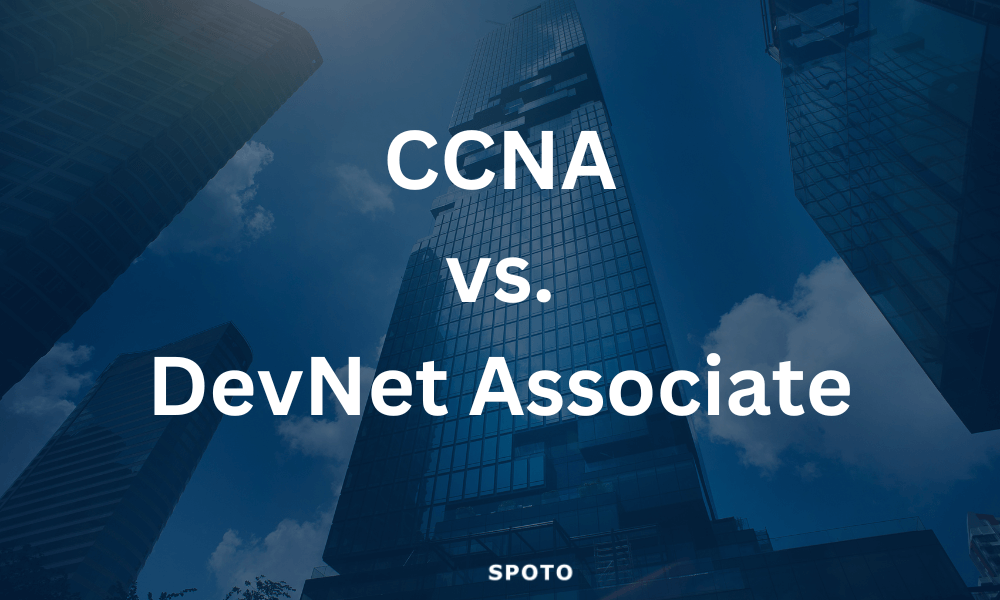
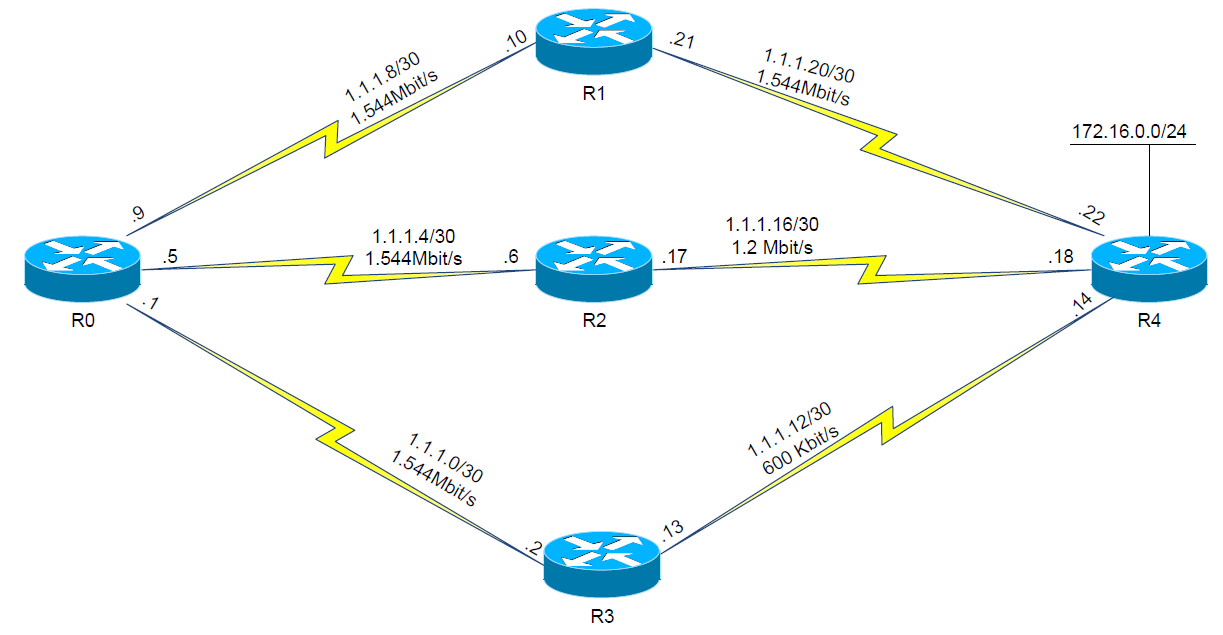
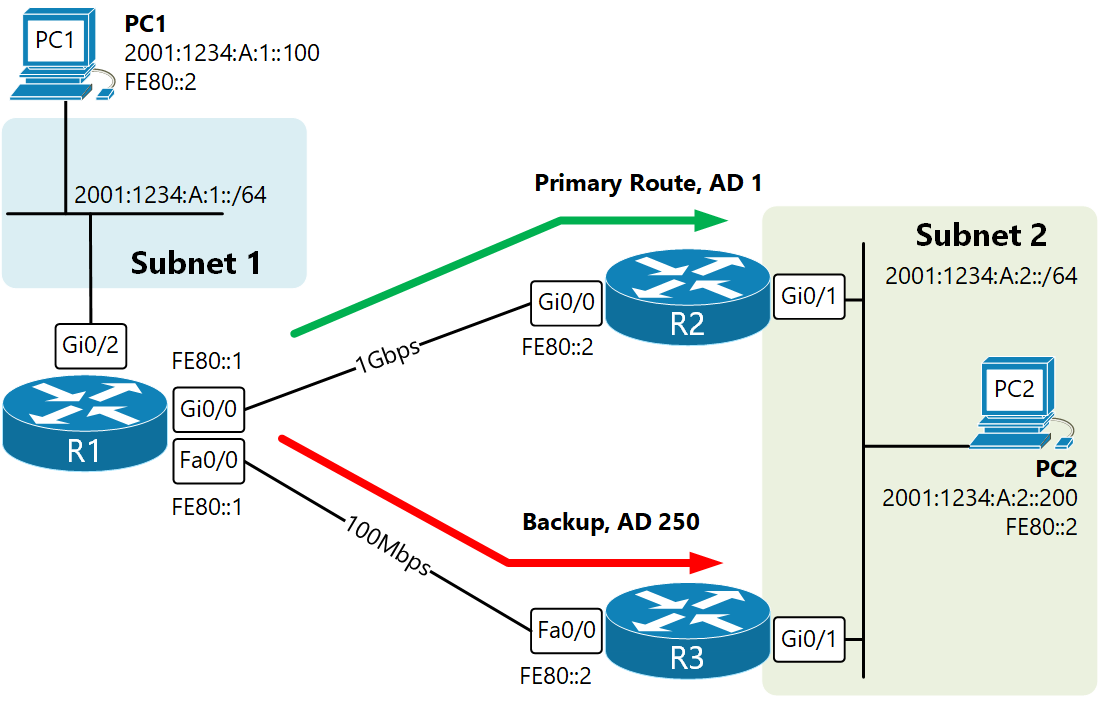
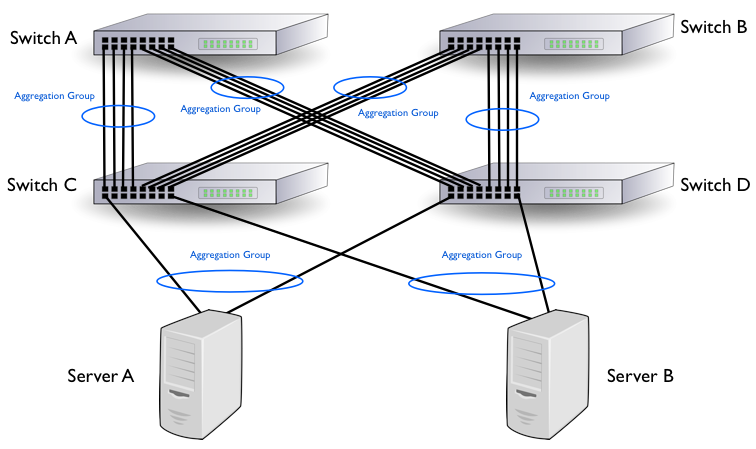

)
